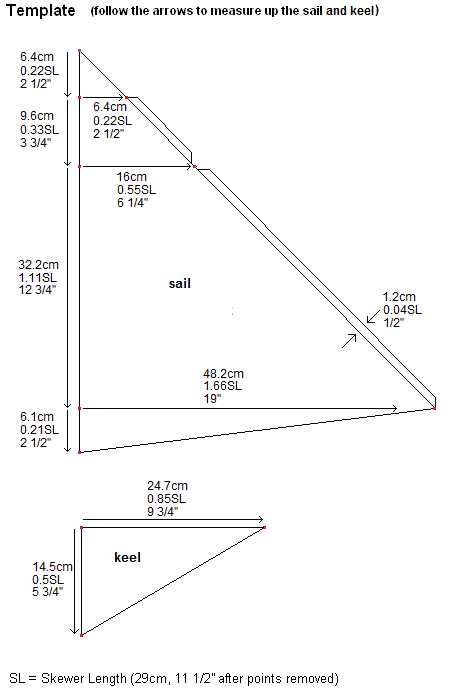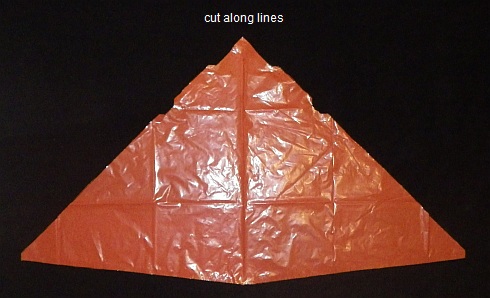- Home Page
- Better Kites
- ... Delta Kite
How to Build a Delta Kite
Step by Step—Page 1 of 3
The MBK 2-Skewer Delta
This set of instructions on how to build a delta kite assumes you know absolutely nothing about kite making. You might already have some of the simple tools and materials required. Anything you don't have is easily bought. If it's not exactly what I used, then at least something pretty similar!
 MBK 2-Skewer Delta
MBK 2-Skewer DeltaThe MBK 2-Skewer Delta Mk2 kite (or just "the 2-Skewer Delta") is a medium-sized kite 96 cm (38 in.) across and 54 cm (21 in.) tall. A tail is optional, if you like the look!
The spreader is secured at each end with polyester sewing thread and glue, since glue alone would not last long with all the flexing that goes on.
The 2-Skewer Delta is a great very-light-to-light-wind flier. Take it out when there seems to be hardly enough wind to keep any kite up. Retail kites like a little more breeze, generally.
Watch the 2-Skewer Delta go straight overhead when a thermal comes through, no matter how much line you have let out.
I have tested this delta in moderate winds too, and it is quite tolerant of winds up to 30 kph. Don't be surprised to see it flap a few times, though, or even pin its wingtips back like a diving bird of prey!
On this site, there's more kite-making info than you can poke a stick at. :-)
Want to know the most convenient way of using it all?
The Big MBK E-book Bundle is a collection of downloads—printable PDF files which provide step-by-step instructions for many kites large and small.
That's every kite in every MBK series.
How to Build a Delta Kite
Sail
Now's the time to read up on the tools and materials required for making a skewer kite, if you haven't already.

The template shown above represents one side of the kite sail plus the keel. You will now transfer the sail measurements to the plastic bag.
Like to see a video clip? Just scroll down to near the end of this page.


- Take a light plastic bag that will fit the entire template shape within one side, and lay it flat on the floor.
- Mark dots on the plastic, corresponding to the corners of the template. There is no need to use a T-square, since any small error will be duplicated on the other side of the sail. And it will make hardly any difference to how the kite flies.
- Using the marking pen, rule lines between the dots to create the template shape.



- Flip the plastic bag over, and trace over all the black lines using your marker pen and ruler.
- Cut out a rectangular section of the bag containing the kite sail, open it out, and lay it flat on the floor. You can now see the complete sail outline as in the widest photo.
- Except for the long edges of the tabs, run clear sticky tape along every straight line. Leave most of the tape on the inside of the sail edges.

- Cut along the black lines with scissors to create the sail. See the photo.

In the closeup photo, you can see the tape edging around the nose area—but not along the long edge of the tab.
As mentioned earlier, there's more kite making on this site than you can poke a stick at. :-)
Want to know the most convenient way of using it all?
The Big MBK E-book Bundle is a collection of downloads—printable PDF files which provide step-by-step instructions for many kites large and small.
That's every kite in every MBK series.
